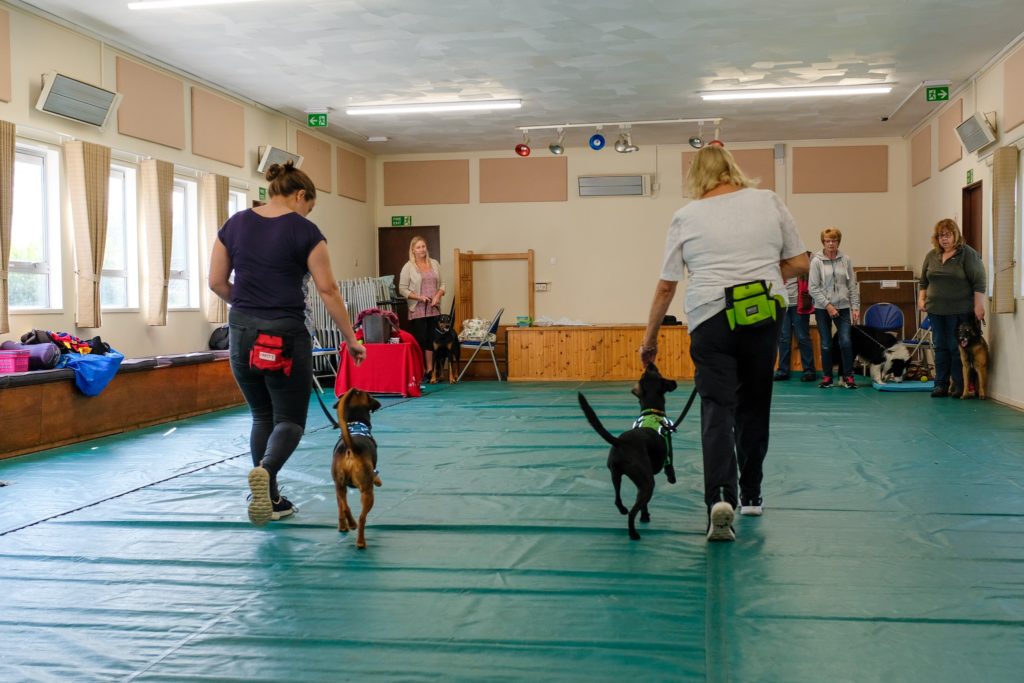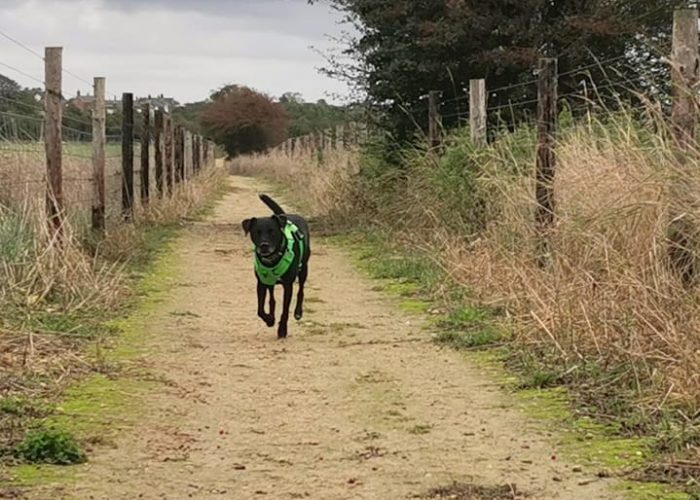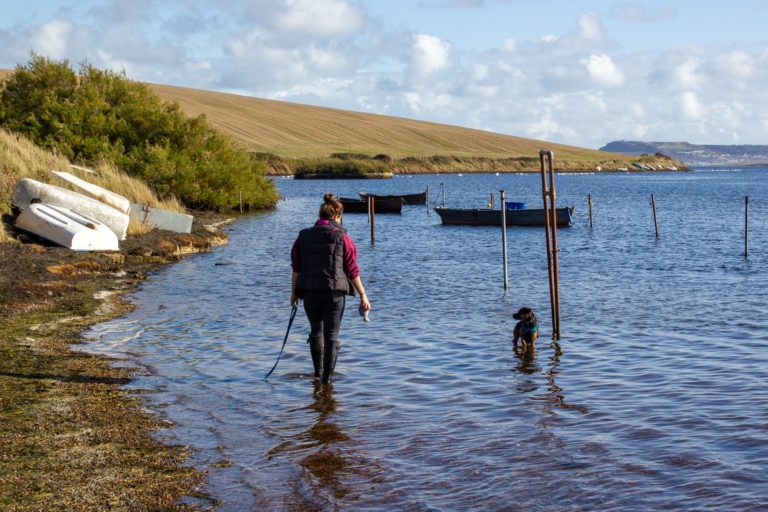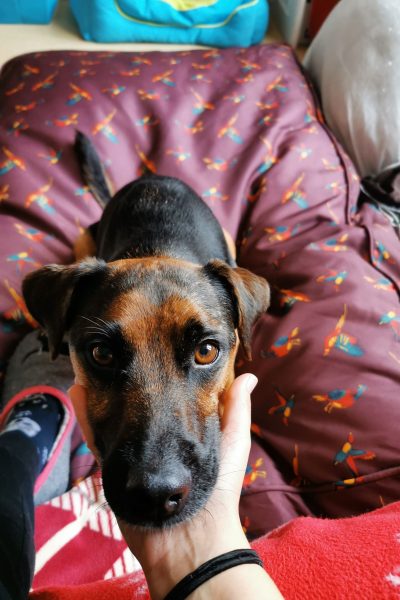
It can be a daunting thought to sit down and think of what I need to teach my dogs on a ‘normal’ day, particularly since both of these dogs have a handful of problem behaviours that need addressing. This has become increasingly more difficult when attempting to set up a dog training business, working on a part time job, finishing off a 12-month IMDT correspondence course, planning, researching for and writing a dissertation, all whilst preparing for a third year of university, and that’s just my academic commitments! With this in mind, I thought I’d share my top 5 tips for fitting in some training sessions for your dog on an average day.
1. Your dog’s walk is the highlight of their day!
Unless you’re one of the few who are able to work with their dogs multiple times a day and have a training session with someone booked almost weekly it is likely that the hour you set aside for walking your four legged friend is the absolute highlight of their day. Try and maximise this time by making that walk an absolute treat for yourself as well! One hour out of your day is basically nothing (although when we’re busy it can almost feel the exact opposite!) so really try and devote that hour to giving your dog your 100% undivided attention, they will more than thank you for it. Remember that every time we interact with our dogs, we’re training them whether we like it or not! Cash it on this and interact with your dog in a way that teaches them what you want!
Put your phone away (unless you fancy a cute selfie with your dog or a gorgeous picture of the scenery with your furry friend enjoying it) and spend the time socialising with your dog, give them a butt scratch or a belly rub if that’s what they absolutely live for, or throw their favourite toy around. Play chase and interact with your dog in the way that your dog enjoys the most! Bear in mind that when walking a lot of dogs prefer to get that nose down to the ground and enjoy the smells and mental work that the outside world has to offer rather than having cuddles with mum or dad. If this is the case cash in on that nose and try out some nosework with them! Set out a treat trail and listen as their noses go 100 miles a minute to find the yummy treats you’ve laid out for them, this is great for impulse control work!
If you fancy being a bit more social with the human kind perhaps try and talk to another dog walker who’s around at that moment and see if you can find a new friend for your dog. To ensure safety, only let your dog approach another dog off or on lead with the owner’s permission and try to watch for a dog that has a similar play style to yours and is preferably of a similar size. If in doubt, bow out, safety is better than a potential play mate!
The walk doesn’t have to be purely for your dog’s benefit, studies have shown that even an extra 20 minutes of walking a day can improve your health so if you devote a full hour to walking with your dog somewhere you’re doing yourself a massive favour as well!

2. Walks are a great opportunity for training.
Walks offer a fantastic opportunity to practice some commands in real-life situations and see if you have any training weaknesses that you could work on. Some of my favourite exercises are moving recalls where you call your dog to you as you run away and really get some energy into the exercise and asking your dog to stay whilst you clean up after them. Other opportunities include asking your dog to carry out cues such as sit, down and a variety of tricks before throwing their favourite toy or letting them go and play with their friends. If you need to put your dog on lead at any point to pass an obstacle this is a great opportunity to practice loose lead walking.
Try selecting two points on your walk, for example two lampposts or two gates in a field and train for the duration of that distance on something that you really need to work on. Remember that dogs learn in short, sharp bursts so if you can fit plenty of these brief sessions in throughout a walk you’ll be achieving your goals in no time!

3. Prioritise training that makes a difference you and/or your dog’s daily life.
If you’ve got something you’re desperate for your dog to do and they just drive you mad doing anything else, take the time out of your day to train the behaviour you want in the scenario you want the behaviour to occur. For example, Pumba likes to sit and watch children walk to school from our front windows at rush. However, when a child rides their scooter to school this is apparently a massive threat and Pumba just has to bark the house down to protect us all from the scary scooter thing. I take the opportunity in the mornings to sit with him at the window with a tub of treats and have my cup of tea, if I’ve got a busy day I’ll have my laptop with me and plan my day at the same time. By simply changing where I eat my breakfast from the sofa to the window seat I’m able to have done a training session with Pumba before I’ve even answered my first batch of emails!
This attitude for training can be applied to more than just scary scooter things! Cooking in the kitchen is a great opportunity for the dogs to look for scraps on the floor, however this is a hazard given all the toes and tails that can be stepped on and bodies that can be tripped over. So instead of just shutting the dogs out of the room, we’ve trained them to go to their mats and stay there whilst we cook and then they can hoover the floor up once we’re done cooking. By intermittently rewarding them for staying on their mats they’re strengthening their mat cue and we have a nice clear kitchen to work in!

4. The kettle boiling is your timer for a training session.
In our hose the kettle is on at least once an hour, especially in the mornings. If you grab five treats every time you pop the kettle on and train your dog whilst it boils you’ve got an automatic timer for the session and you’re forced to keep the sessions short! Dogs learn better with frequent short periods of learning so if you have three cups of tea a day you’ve already organised three training sessions throughout the day without even trying!

5. Don’t focus on the amount of time you spend training.
If you focus on the amount of time you need to spend training you’ll begin to stress that you need to achieve an hour training x, y and z, but can’t find the time to fit an hour’s training session into your day. I’ve found that if you tell yourself to pick up two handfuls of treats and attempt to train for five minutes, suddenly it will have been 15 minutes and you’ve achieved far more than you through you would in the session!
Brian Hare discusses the effects of shorter training sessions on success in the book The Genius of Dogs. He demonstrates how shorter, frequent training sessions are far more successful for achieving the desired end behaviour than infrequent, longer training sessions. Shorter sessions also mean the dog is usually left wanting to train more and builds motivation and desire to work with you. There, an effective training session is a shorter one!
If you bear all of these tips in mind you’ll find you’ve achieved far more training throughout the day by slightly adjusting your daily routine to accommodate more frequent, short training sessions with your dog. This will allow you to achieve your training goals far faster than you were expecting to and will help both you and your dog love the training you’re carrying out.
Tell me your main barriers to finding time to train in the comments.
